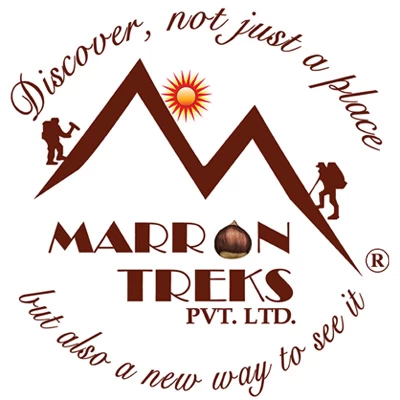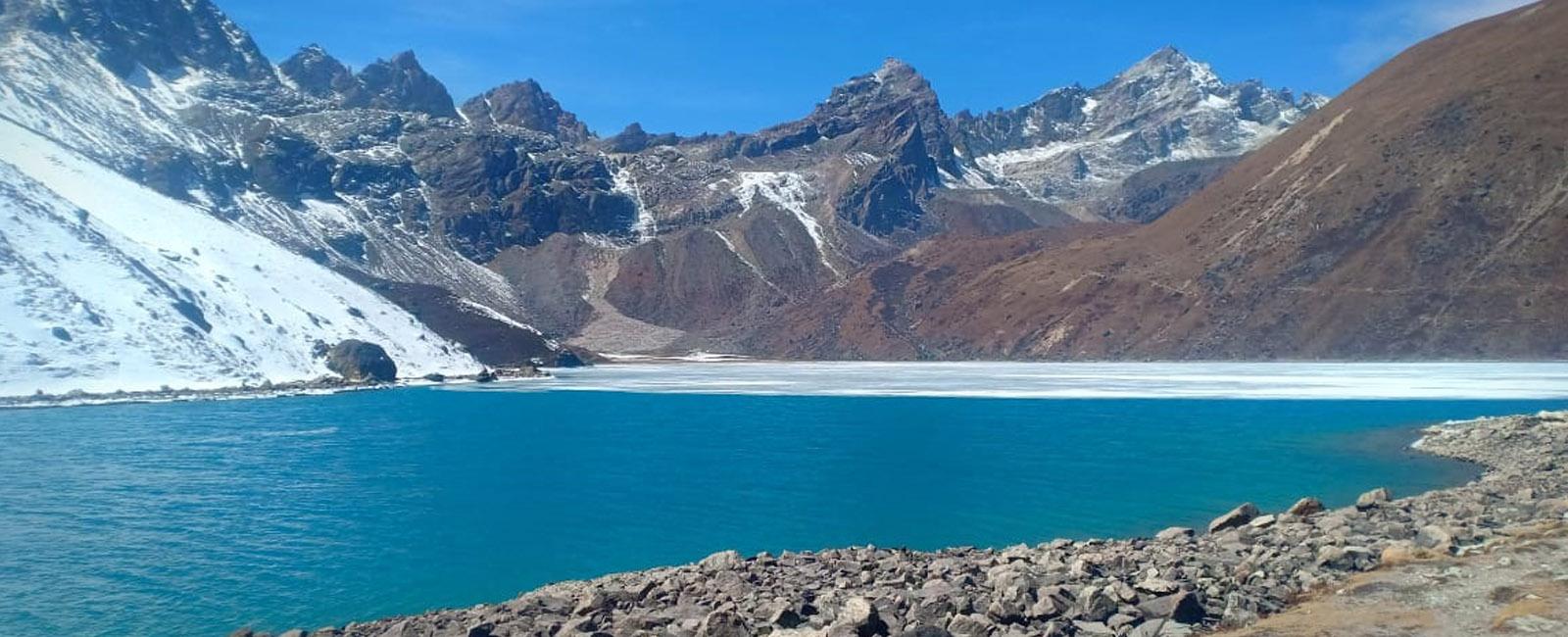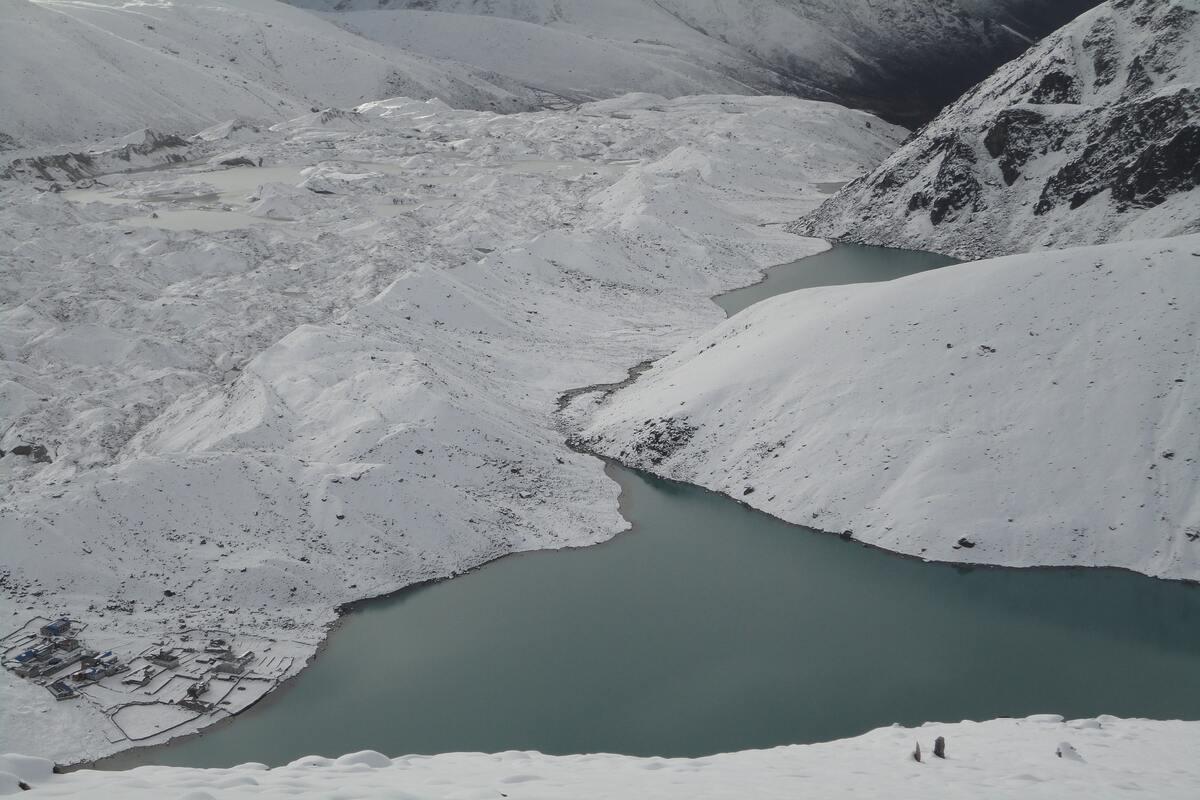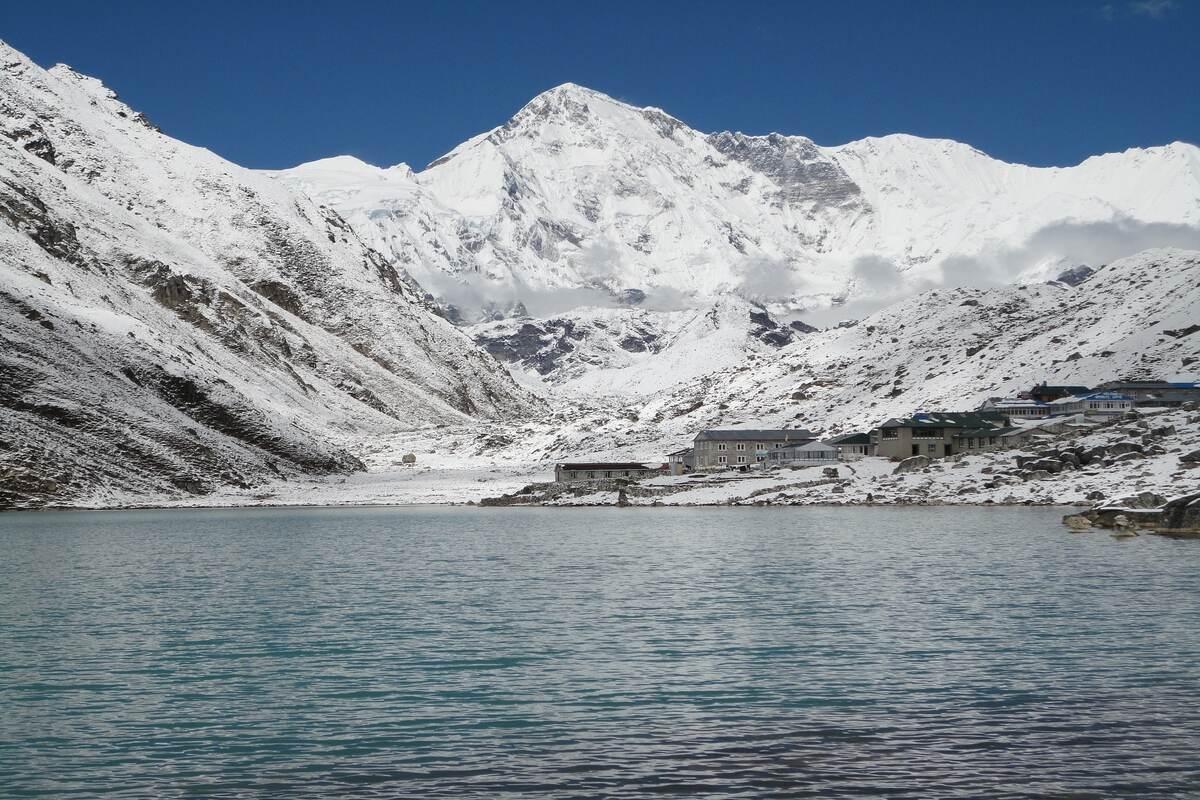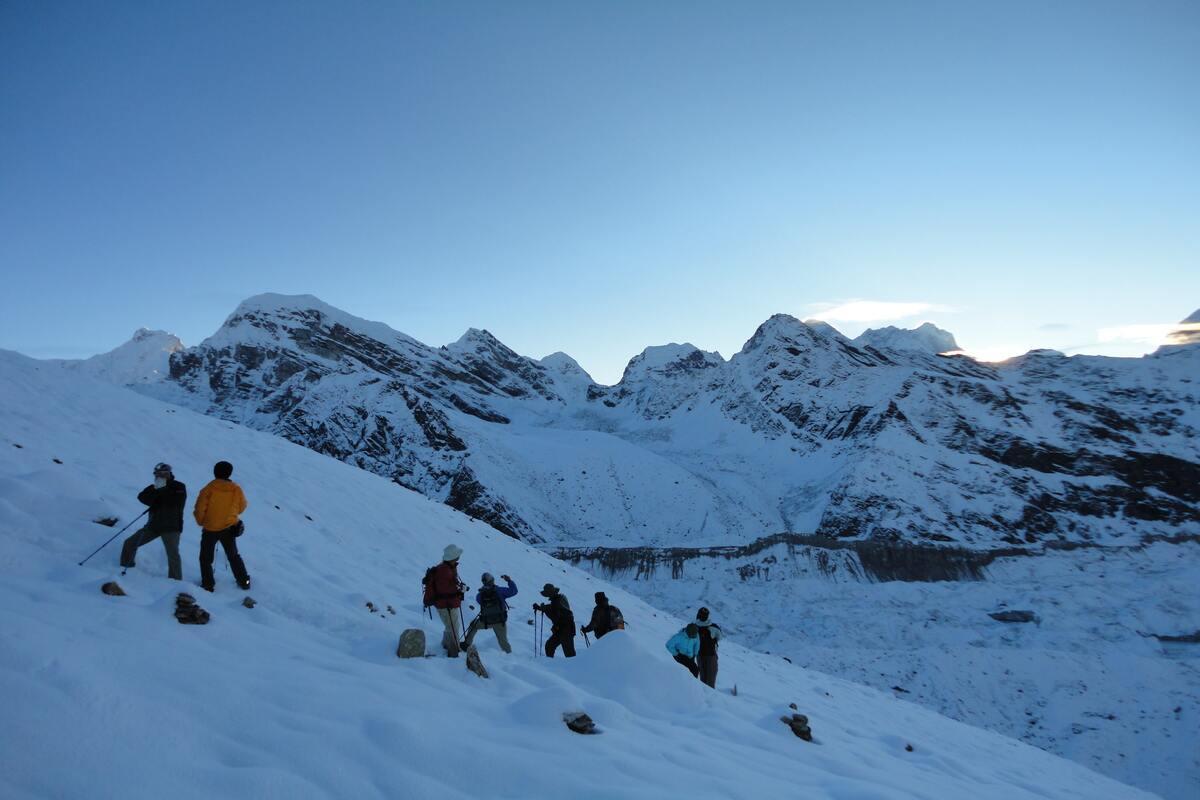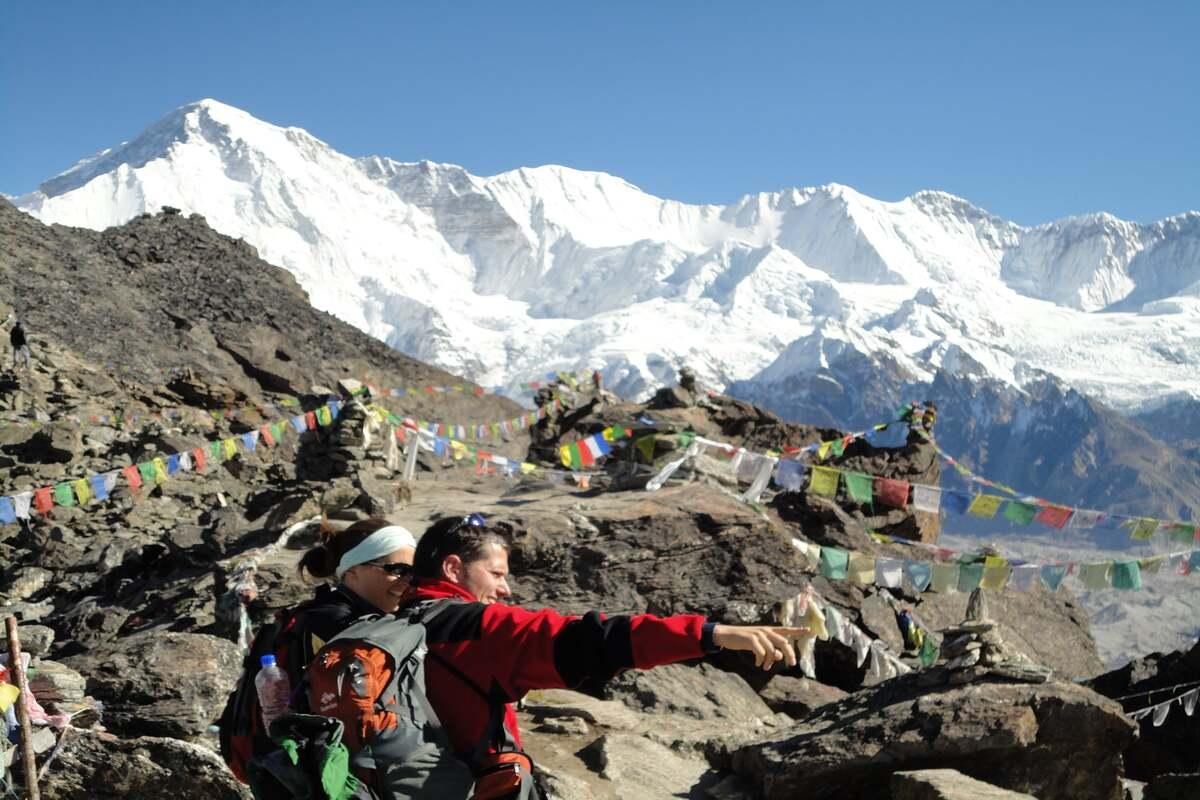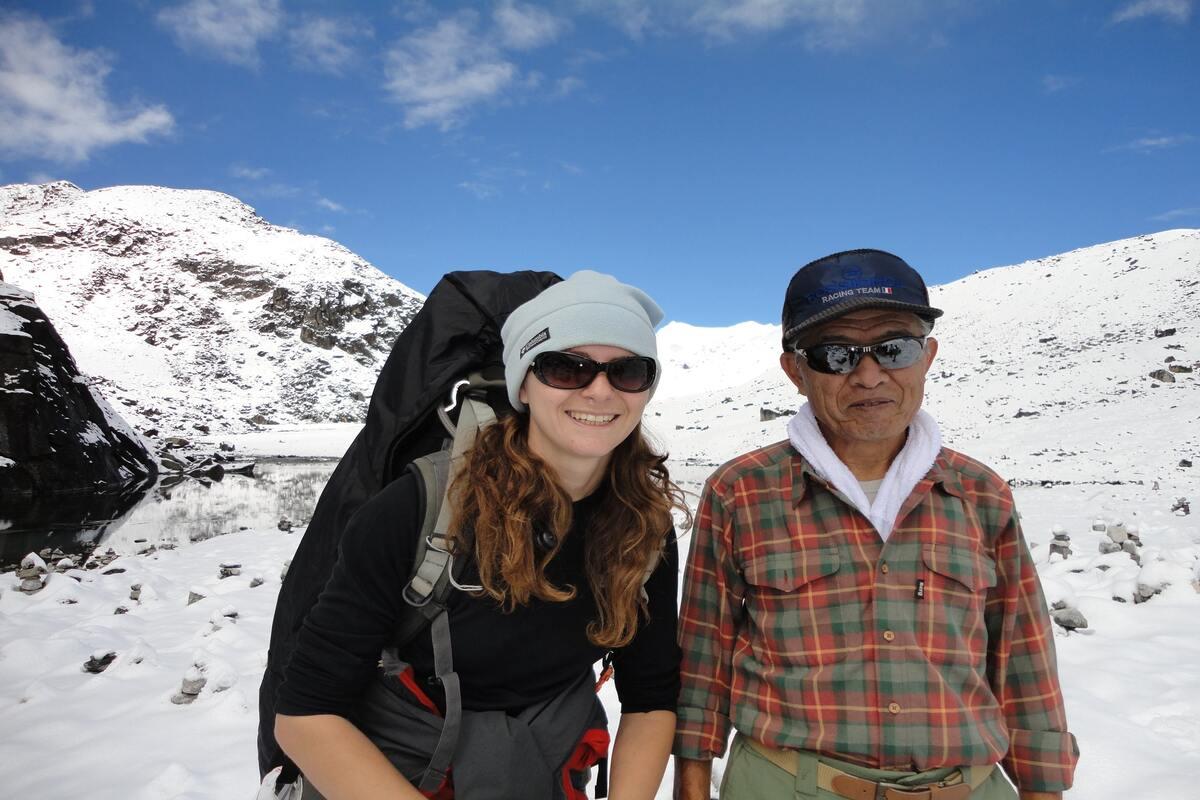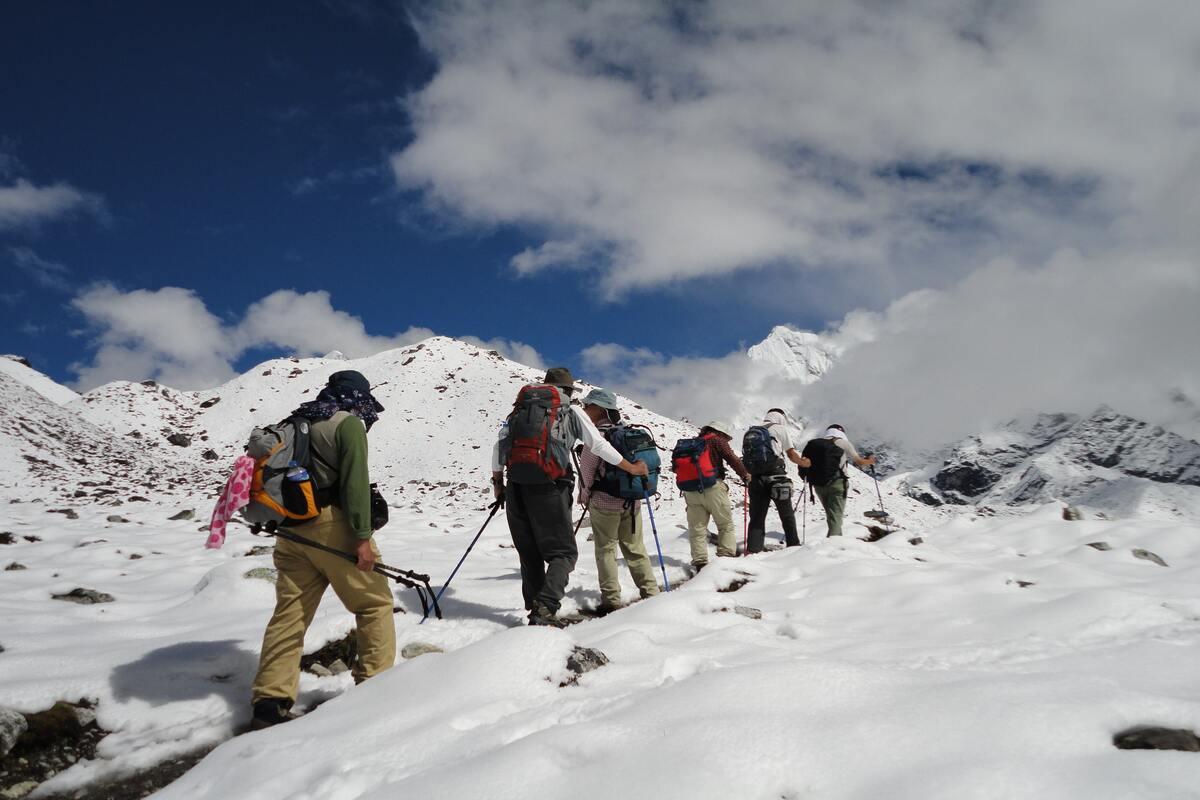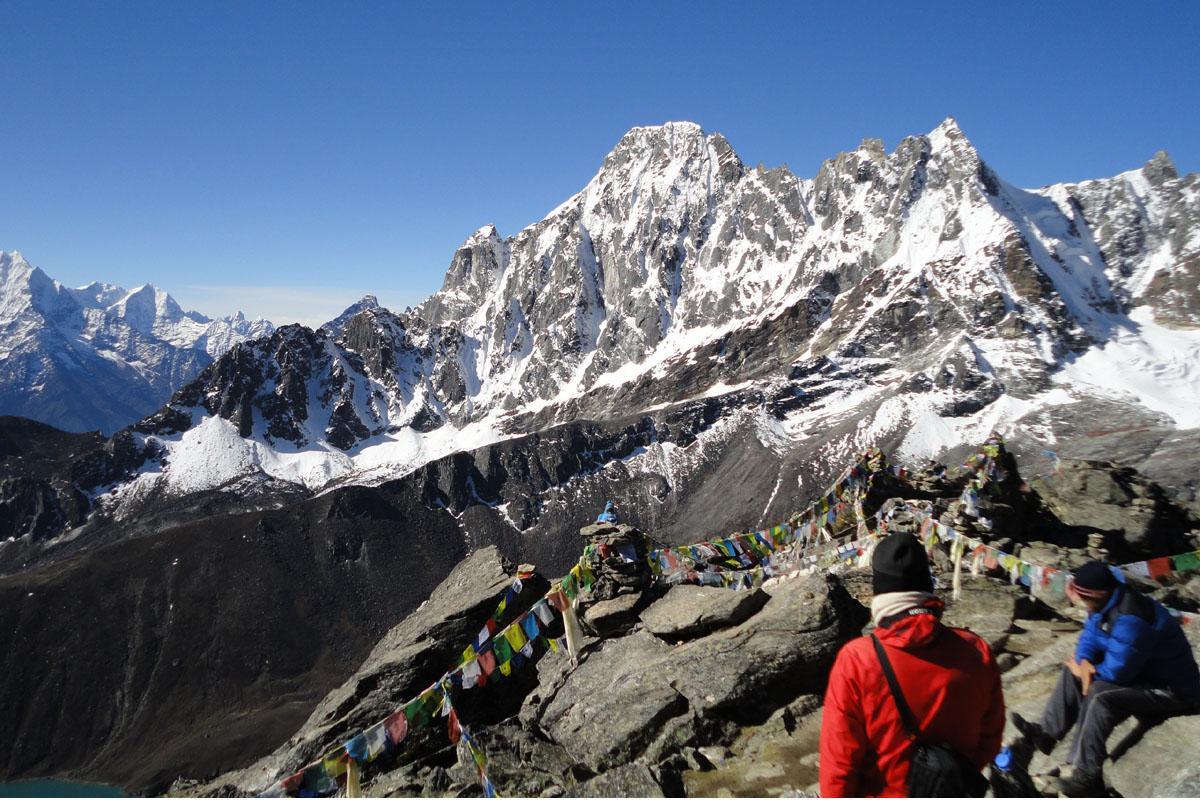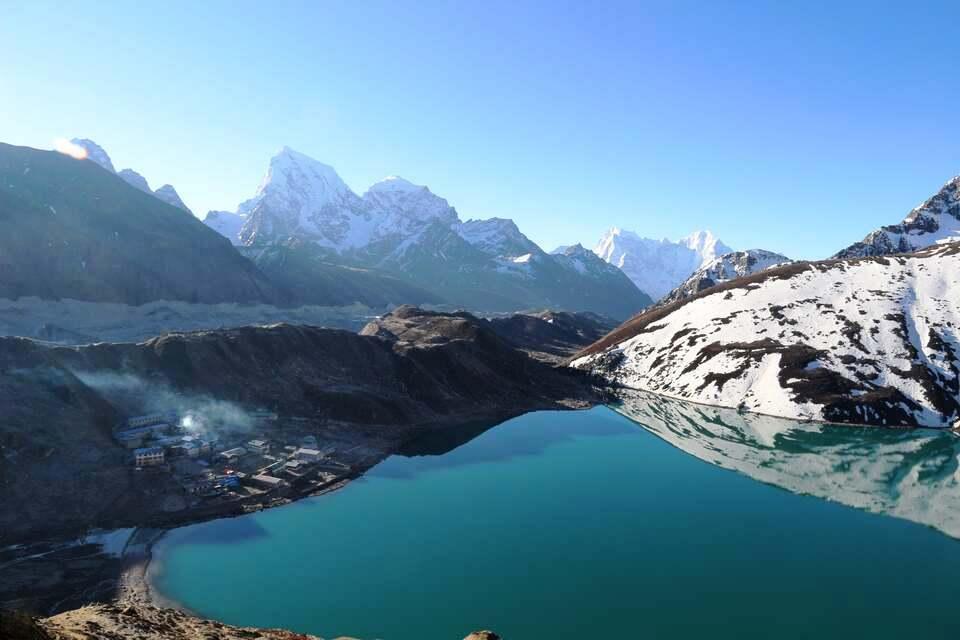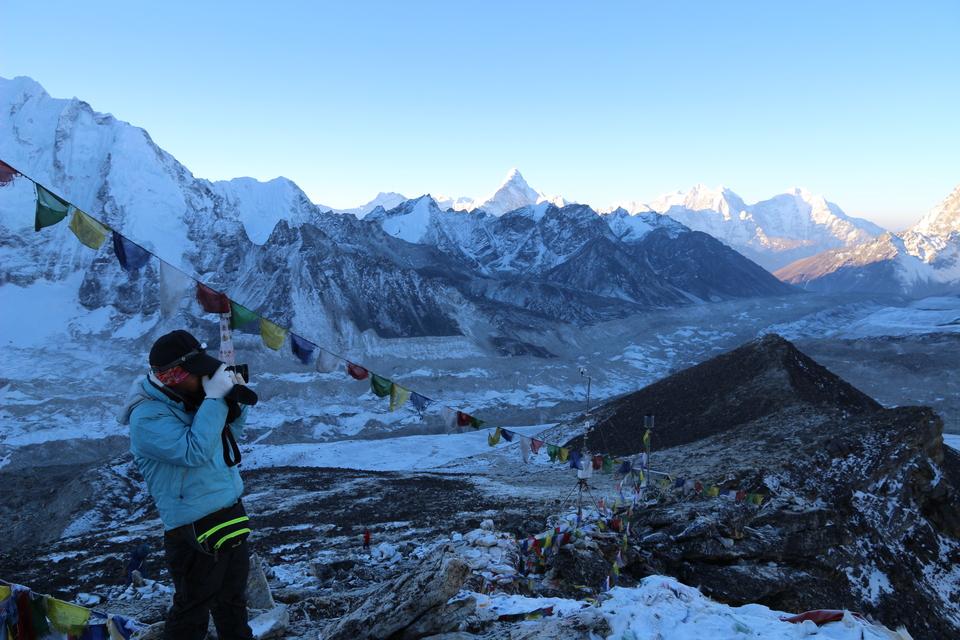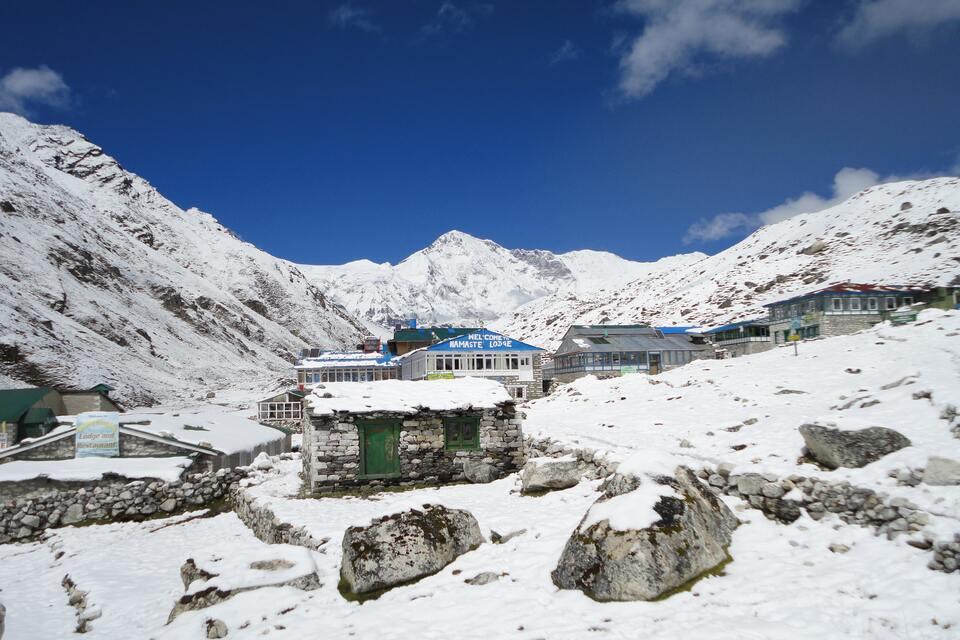Gokyo Lake Trek
Trip at a Glance
Gokyo Lake Trek is another popular trekking in the Everest region and can be an alternative with the more popular Everest Base Camp Trek. The valley of Gokyo is considered one of the most beautiful valleys in the Khumbu region with a blend of nature, culture and spectacular mountain views.
Trekking to Gokyo will take you to the dazzling Gokyo Lake located at 4,790 meters in the Everest region. Gokyo Lakes are the world's highest freshwater lake system comprising six major lakes with Thonak Lake being the largest. Gokyo-Ri at 5357 meters above Gokyo Lake is a popular Himalayan vantage point offering spectacular Himalayan views including Mt. Everest, the world’s highest peak.
The trail to Gokyo Valley is less busy and trekkers get to soak in the unspoiled beauty of the Everest region. Trekking to Gokyo Lakes will take you traditional Sherpa villages, monasteries, and lush valleys. Other attraction of the trek is the Gokyo Village at 4790 meters located on the third Gokyo Lake's shore. With the collection of stoned building with most of them being lodges on the lakeshore and the spectacular Gokyo Valley makes Gokyo Village most picturesque.
The best time for the Gokyo Lake Trek is on the spring (March to May) and autumn (September to November) seasons during when weather is clear with great mountain views. The trek is doable for both experienced trekkers and beginners however a moderate fitness level is required to accomplish the trek and to fully enjoy it. Gokyo Lake Trek offers a unique trekking in the Himalayas with less crowded trails and is most popular trek after Everest Base Camp trekking.
Gokyo Lake Trek Highlights
- Experience a scenic flight to Lukla, offering one of the most picturesque aerial journeys.
- Explore Namche Bazaar, the administrative hub of the Khumbu region.
- Witness the stunning views of Ama Dablam, Thamserku, Tawoche & Khumbila.
- Observe the unparalleled beauty of Nepal's largest Ngozumpa Glacier.
- Exciting hike to Gokyo Ri (5357m) provides the thrill of experiencing Everest Base Camp & Kalapathar.
- Immerse yourself in the peaceful and dazzling six sacred lakes of Gokyo.
- Travel through the Sherpa villages & discover their distinct and renowned way of living.
Itinerary
Day 01: Arrival in Kathmandu (1400m)
Day 02: Fly from Kathmandu to Lukla (2840m/40min) & Trek from Lukla to Phakding (2610m/3 – 4hrs)
Day 03: Trek from Phakding to Namche Bazaar (3440m/5 – 6 hrs)
Day 04: Rest day in Namche Bazaar for Acclimatization & Hike to Hotel Everest View (3880m/3-4 hrs)
Day 05: Trek from Namche Bazaar to Phortse (3810m) via Mong La Pass (3975 m/ 5 – 6 hrs)
Day 06: Trek from Phortse to Machhermo (4470m/5 – 6 hrs)
Day 07: Trek from Machhermo to Gokyo Lake (4750m/5 – 6hrs)
Day 08: Acclimatization day at Gokyo/Ascent to Gokyo Ri (5357m/5 – 6 hrs)
Day 09: Trek from Gokyo to Dole (4038m/3 – 4 hrs)
Day 10: Trek from Dole to Namche Bazaar (3440m/4 – 5 hrs)
Day 11: Trek from Namche Bazaar to Lukla (2840m/6 – 7hrs)
Day 12: Fly from Lukla to Kathmandu (1400m/40min)
Day 13: Final Departure
Upon your arrival at the Tribhuwan International Airport in Kathmandu, you will be received by a representative from Marron Treks and then transferred to your designated hotel. Once at the hotel, you are greeted with welcome drinks. We will then have a quick pre-trip meeting, where you are briefed on the trekking itineraries and some formalities that ought to be pursued. Depending on the time remaining, you can either rest or stroll around the vicinity of your hotel to get the feel of this busy, colorful and energetic capital of Nepal.
We take an early morning flight Lukla after breakfast. In about 45 minutes, we land at the Tenjing Hillary airport in Lulka, picturesquely surrounded by mountains. These 45 minutes on board is going to be the best aerial journey you have had so far. We now meet up with our trekking crew and get acquainted to each other. After some unpacking and arrangements, we then proceed for our trek through the village of Lukla until we reach Phakding. Chaurikharka School, Chablung, Tharo Koshi, Ghat etc are some of the sites that entice you along the trail. On reaching Phakding, we have our lunch and then if interested, can go on a short hike to the nearby monastery. This could help getting acclimatized to the high elevation.
Note: Flights from Tribhuvan International Airport (TIA) in Kathmandu to Lukla and vice versa may be rerouted to Manthali during the peak trekking seasons of March, April, May, September, October, and November due to increased air traffic congestion. Manthali is 5 hours drive from Kathmandu and we need to start at 12.30am for Kathmandu/Manthali drive to catch the flight to Lukla from Manthali. During December, January, February, June, July, or August, you will experience a direct flight from Kathmandu to Lukla and vice versa.
The trail leads us along the Dudh Koshi River, through the pine forest and many suspension bridges, including the very famous, Hillary Suspension Bridge. The route then leads straight up beyond a waterfall, from where we get a breathtaking view of Mt. Thamserku (6618 m). Advancing further, we come to a check post which also happens to be the entrance to Sagarmatha National Park. As we continue our ascent through the forests and bridges, we approach the confluence of Dudh Koshi and Bhote Koshi Rivers. Trudging up further for about 2 hours brings us to Chautari (resting place), wherefrom we can relish the splendid sight of the Mt. Everest almost belittling the Lhotse-Nuptse ridge. Passing through one last settlement, the Jorsale village, we ultimately reach Namche Bazaar in about 2 hours. Namche Bazaar is the administrative center of the Khumbu region and is also the gateway to the Mount Everest.
Today is the rest day at Namche Bazaar for acclimatization and to cope with the rising elevation. You can go for a side excursion to Hotel Everest View (3880m) which is considered the hotel located at the highest point on earth. From it’s balcony you can have the first glimpse of Mt. Everest and other world’s highest peaks sipping tea/coffee. Then it’s back to your hotel in Namche Bazaar. In the evening, you can explore around Namche, talk with the locals, meeting many other trekkers and mountaineers from around the world.
That one extra day at Namche has probably made us all feel well rested. Let’s have some breakfast and we will resume our trek along the bumpy trail relishing the view of Mt. Lhotse, Nuptse, Everest, Ama Dablam and Thamserku. You will possibly get a chance to spot on some of the wild lives like Pheasant, Himalayan Thar and even Musk Deer. We now embark on the downhill route until we arrive at Kyanjuma. Moving ahead, the path then takes us to Sansa, from where it bifurcates into two different trails- one that leads to the Everest Base Camp and the other to Gokyo Valley. We embark on the later and move gradually up to the Mong La Pass (3975 m).The pass offers you spectacular view of Mt. Ama Dablam, Mt. Thamserku, Mt.Tawoche & Mt. Khumbila . From here we trail down through the pine forests to the Dudh Koshi River and arrive at Phortse Thenga (3680 m). We now cross a suspension bridge over the river, and make an immediate ascent through the rhododendron clusters till we get to Phortse, poised at the lower slopes of Mt. Tawoche.
The Gokyo Ri trek is not about rushing. The climbs in the days ahead are steep and high subsequently making one prone to altitude sickness. So we are supposed to be slow but steady. We retrace our steps back and continue trailing until we reach Phortse Thenga (3680 m). From here, we trek easy and relatively flat to the village of Dole (4110 m). It offers good views of Mt. Khumbila and Mt. Tawoche and is also a favored trekkers’ stop. Path from Dole to Machhermo is significantly steep that takes you out of the dense forest to more of a barren hillside vegetated with dotted scrub junipers. We trail ahead past a chorten and make an ascent to the village of Lhabarma (4330 m). Relishing some fascinating views of Cho Oyu, Kantega and Thamserku, we move ahead and pass through many summer settlements including Luza (4360 m). Making our ascent along a hillside above Dudh Koshi River, we pass by few more meager settlements and sandy hillocks until we finally arrive at Machhermo, the last major settlement on the way to Gokyo. Towards the north of the village, there is a rescue post named as ‘International Porter Protection Group’, which provides emergency treatment to the porters and trekkers and also educates them about Acute Mountain Sickness.
Kissing goodbye to the foothills of Machhermo, we make our way into to the moonscape of high mountains. The root takes us steeply up to the cluster of chortens on the hillock. On the way, you get to enjoy the view of Mt. Kantega and the sixth highest mountain in the world, Cho Oyu. Moving ahead, we pass by the tiny settlement of Pangka, which has brutal history of some 40 people being killed by the avalanche in 1995. Let’s be generous enough to offer our empathy to the families of the departed souls. After this emotional moment, we make our way further down the bank of the Dudh Koshi River and then ascend right away to the mound of sand and rubble at the end of the Ngozumpa Glacier. This ascent is quite steep. We now cross a bridge over a stream and pass by the first lake- Longponga Tsho (4710 m). As we make our way ahead along a leveled trail, we cross a barren landscape and pass by yet another lake- Taboche Tsho (4740 m). We are not yet finished with the lakes. We advance further through the randomly grown rhododendron clusters, and pass by the final lake, Dudh Pokhari, which literally means ‘milk pond’. The beautiful Gokyo valley stands on the shores of this third lake. We relax on the comfy beds of the teahouse contemplating on the thrill and adventure of tomorrow.
The beds at Gokyo are indeed comfortable, but we are not lying here all day. In fact today, we will be reaching the highest point of this trek; God forbid the bad weather! Gokyo Ri is located to the north of Dudh Pokhari. We head northwards from the village and cross a stream. Trudging up the steep route for about 3 hrs, we get to the apex of Gokyo Ri, an exclusive vantage point offering you the jaw-dropping views of Cho Oyu, Everest, Cholatse, Makalu, Tawoche and also the Ngozumpa Glacier. The elation and ecstasy of ascending to the Gokyo Ri isn’t lesser than being at Kalapathhar in any way. Gokyo is not just all about Gokyo Ri, but the six sacred lakes are also the emblem of magnificence of this valley. On day 8, we already came across four of the lakes. If we are not too worn out with the ascent to Gokyo Ri, we can go for an excursion to two of the remaining lakes- Thonak Sho and Ngozumpa Sho. When we climb to a hill at the edge of these two lakes, we get to a grassy ground festooned with prayer flags, known locally as “the Scoundrel’s Viewpoint (5000 m). It offers unobstructed views of Cho Oyu, north face of the Everest and the upper expanse of the Ngozumpa Glacier. Relishing the beauty and adventure of the surrounding, we trace back to Gokyo for overnight stay.
Our previous day at Gokyo was pretty busy. We had a good acclimatization but not the kind of rest we would have wanted. It’s not something to bother about, because our today’s trek is an easy downhill walk. We trail down along the Dudh Koshi River and pass by the second and first lakes. A little ahead, we cross a bridge over a stream and arrive at Phangka. From here, we again descend to a terrace and then make a fair ascent to a ridge, arriving at edge of Chorten. Relishing the view of Thamserku, Kantega and Cho Oyu, we continue our descent and pass by the villages of Machhermo, Luza and Lhafarma, until we finally arrive at Dole, beautifully poised close to the Phune river. You can enjoy the superb view of Mt. Khumbila and Mt. Tawoche to the south and north respectively.
After that good night’s rest at Dole, it’s time now to bid farewell and move ahead. We descend to Phortse Thenga. Continuing our trek along the live trail embellished with rhododendrons and colorful wild flowers, and spotting various faunas at the same time, we cross the Mong La pass. Let’s admire the beauty of Mt Khumbila, Mt. Thamserku, Mt. Ama Dablam and Mt. Kantega. Of course, they glare at us in the same indifferent way, but we now know them all so very well, don’t we? A lengthy walk from here, will take us to Sansa, the junction to Everest Base Camp and Gokyo. From Sansa, we embark on a curvy uphill route to Kyangjuma and then to the Namche army camp hill. Short hike from here will get us to the loud Namche Bazaar. Big sigh of relief! We can rest and enjoy the modern amenities of the hotels here.
It is a lengthy trek, but the enthusiasm of accomplishing the trek would probably get us going without complains! Let’s begin with a steep descent down the rocky terrain. We cross and re-cross the Dudh Koshi river over different suspension bridges and continue trailing along a leveled route. Passing by some splendid waterfalls, we cross the famous Hillary suspension bridge, which brings to the Sherpa village-Phakding. The towering mountains now seem to be whispering good bye to us, urging us to make a commitment to come back and see them again sometime in future. Trailing ahead along the prayer flags, enjoying the cool breeze, we arrive at Lukla; tired but content! We can feel the muscles aching, yet we manage to flash a smile at everyone we meet. Its natural…we’ve eventually made it!!! Celebrate the success with the crew members and staffs. We want you to make a promise that you will be back to Nepal very soon.
Well, you must all be eager to hit the sky after walking for almost two weeks! Flight from Lukla to Kathmandu is outstandingly scenic. Generally, we take a morning flight, as weather could be capricious in the afternoon. Once you land at the domestic wing of the Kathmandu airport, you will be received by a representative from Marron Treks and then transferred to your hotel. You still have a whole chunk of the day remaining. So you can make the best use of time going in for a shopping. Thamel is the tourists’ shopping stop. It’s your last night in Nepal, and we want it to be memorable. In the evening, Marron Treks will host a farewell dinner featuring the range of delicious Nepali cuisines and a cultural program. You’ve toiled hard during the trek, so we want you to enjoy even harder tonight.
After breakfast, a representative from Marron Treks will escort you to the international airport, three hours prior to your flight schedule. Have a safe flight back home and we look forward to being your adventure companion in Nepal again.
What is included?
- Airport pick-up and drop services.
- Hotel accommodations in Kathmandu with breakfast.
- Kathmandu/Lukla/Kathmandu round airfare.
- All trekking accommodations with Breakfast/Lunch/Dinner at local lodges.
- Four seasonal sleeping bags and duffel bag bags (to be returned after trip completion).
- A comprehensive medical kit (will be carried by the trekking guide).
- Experienced Government licensed English Speaking Guide & Porter (1 porter for two people) including their food, accommodation, salary & insurance.
- Permits for Everest National Park, Khumbu Municipality and TIMS (Trekkers' Information Management System).
- Farewell dinner with a live Nepalese cultural program.
- All government and local taxes.
What is not included?
- International airfares.
- Nepal entry visa fee – Visa can be obtained upon your arrival at the Tribhuwan International Airport in Kathmandu. (USD30 for 15 days)
- Lunch & dinner in Kathmandu.
- Personal travel insurance.
- Emergency rescue evacuation (to be covered by the client's travel insurance).
- Other expenses of a personal nature (phone calls, laundry, battery recharge, extra porters, bottle or boiled water, hot shower etc.)
- Bar bills, alcoholic drinks & beverages.
- Tips to the guide & porters (Tipping is expected).
Route Map
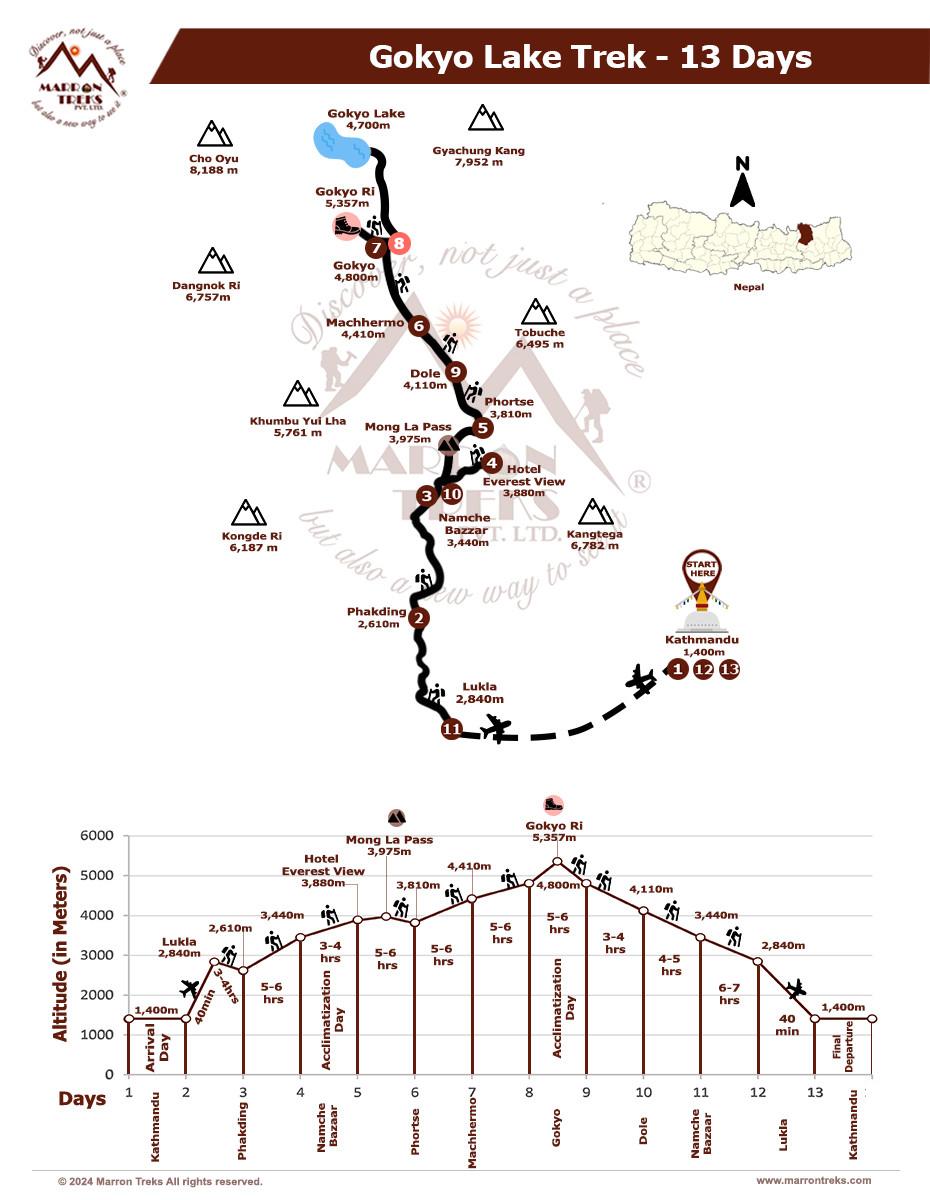
Trip Info
Accommodation
While you are in Kathmandu, we opt to accommodate you in 4- or 5-star hotels like Hotel Royal Singhi (4-star), Hotel Manaslu (4-star), Radisson (5-star), Yak & Yeti (5-star), or similar. During the trek, you will be accommodated in a local mountain lodge, better known as Tea House. These lodges and teahouses provide good services and are equipped with basic amenities. We will endeavor to provide you with the best accommodation available along the route so that you get a good night’s rest in a hygienic milieu.
Meals
We never compromise the quality of food or the health of the trekkers as well as the crew members. Generally, we opt for the fresh and nutritional local community food available. You could make your delicious pick from an array of traditional foods like Sweet potatoes, buckwheat barley, etc. This way, you could not only get a real sense of the local culture and life patterns but also contribute to promoting the locally available resources of organic food and beverages. Besides, a wide range of Continental, Chinese, Italian and Indian cuisines like Pizza, Spaghetti, French Fries, Soups, Breads, Masala curry, etc. are also available in the restaurants for your retreat.
Acclimatization
Altitude sickness is a serious risk while trekking in the Himalayas. It's important to acclimatize properly by spending a few days at lower altitudes before heading higher. By spending time at lower altitudes before pushing higher, your body has time to adjust. Our trekking packages have enough acclimatization days planned where you'll be spending a day or two at lower altitudes, allowing your body to adjust to the increasing altitude.
Electricity & drinking water
For an additional cost, you can use the electricity in all tea houses and lodges to recharge your batteries. The lodges have packaged mineral water for sale, or you can fill your bottle with boiling water. To make water drinkable, you can use water purification tablets too. But, due to hygienic issues, you should avoid drinking water from taps, rivers, or wells in trekking areas.
Communication
At lodges, restaurants, and hotels, Wi-Fi is available for an additional fee in the most popular trek regions, like Everest, and Annapurna. However, at high elevations, phone calls are the only means of connection. Our office in Kathmandu is in constant communication with your trek guide. In Kathmandu, you can purchase a local sim card for communication purposes. At high elevations, the mobile signal might not be as strong, though.
Luggage
Our porters are paired with one trekker for every two hikers, and one porter can safely carry 30 kg maximum weight. Therefore, we advise you to fill your duffle bag not more than 15 kg with your belongings. You may carry a small backpack with your valuables and informational documents. The things you are not taking along on the trek can be stored in a hotel in Kathmandu free of cost.
Typical Trek Day
Mostly your trek day starts with breakfast at 7-8 am, followed by a 3-4 hour morning trek. Lunch break is around an hour, then you continue trekking to your destination for the day. After reaching the teahouse lodge, you can relax, explore nearby areas, and enjoy dinner at 6-7 pm. Evenings involve socializing, a trek briefing, and leisure activities before bed.
Travel Insurance
It is advised that you arrange your travel insurance before leaving your homeland. The main thing is to make sure that your insurance covers you for both- medical and evacuation costs. Having travel insurance with you makes your trip secure and hassle-free.
Our Guides
Guides play a significant role during the trek. They are the ones who literally decipher the trekking codes for you so that you can actually connect with nature, culture and people along the way. We have helpful and dedicated trekking guides who are very well-versed in the culture, life patterns and every single detail pertaining to the trek region you are traveling in. Thus, in the company of our professional Sherpa guides, your trek becomes not only entertaining but also equally informative.
Porter and Staff Care
When it comes to high-altitude trekking, porters and staff members make up a pivot. Marron Treks ensures that all the porters and staff members going to high altitudes are provided with adequate clothing and equipment. All our field staff are covered by insurance.
